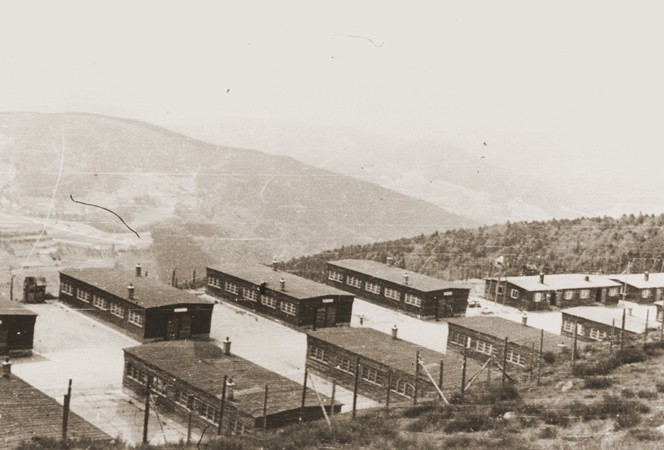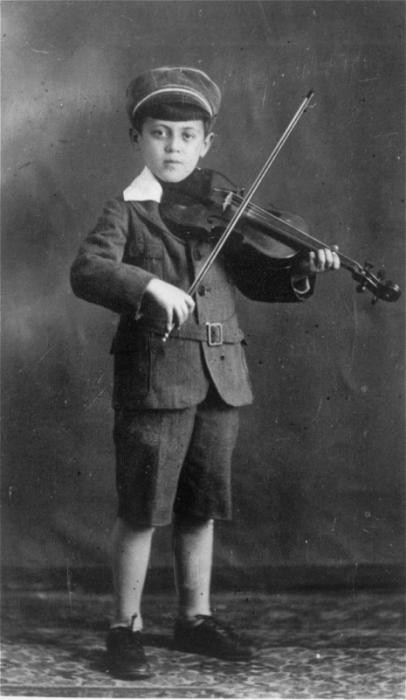
Night and Fog Decree
"Nacht und Nebel" ("Night and Fog") was the codename given to a decree of December 7, 1941, issued by Adolf Hitler and signed by Field Marshal Wilhelm Keitel, Chief of the German Armed Forces High Command. It allowed German authorities to abduct individuals alleged to be "endangering German security" so that they effectively vanished without a trace.
The "Night and Fog" decree was directed against persons in occupied territories engaging in activities intended to undermine the security of German troops. They were, upon capture, to be brought to Germany "by night and fog" for trial by special courts. This circumvented military procedure and various conventions governing the treatment of prisoners. The code name stemmed from Germany's most acclaimed poet and playwright, Johann Wolfgang von Goethe (1749–1832), who used the phrase to describe clandestine actions often concealed by fog and the darkness of night.
During the summer of 1941, a large number of German troops withdrew from occupied France to participate in the invasion of the Soviet Union. At the same time, the entry of the Soviet Union into the war generated increased Communist resistance activity throughout German-occupied Europe, including France. Consequently, the number of efforts aimed against occupation units and, in particular, acts of sabotage to destroy communication lines, steadily increased. In response, German counter-intelligence redoubled its efforts, capturing large numbers of resistance members and saboteurs. This in turn meant an increased number of trials by overburdened military courts. In addition to a large number of death sentences, these courts also handed down many prison sentences.
Hitler believed that the process of managing resistance and sabotage through the system of military justice was far too cumbersome and often too lenient. He declared it to be an ineffective means of suppressing resistance. Instead, he ordered directives aimed at immediate, effective, and enduring intimidation of the population. Field Marshal Wilhelm Keitel, Chief of the German Armed Forces High Command, objected that it was impossible to sentence every potential resister to death and that military courts would, in any case, refuse to co-operate.

Hitler responded by dictating that military courts would continue to adjudge those offences found sufficiently grave to impose capital punishment without lengthy proceedings. If not, suspected persons were to be brought to Germany, where special courts would decide their fate. To deter local resistance, the decree forbade these prisoners to have contact with loved ones and family members in their homeland. Keitel's implementation letter states that "efficient intimidation can only be achieved either by capital punishment or by measures by which the relatives of the criminal and the population do not know [the prisoner's] fate."
The decree replaced the policy of long prison sentences, "re-education" efforts, and the taking of hostages in order to suppress underground activities. It allowed German authorities to abduct those individuals "endangering German security" by night, so that they effectively vanished without a trace. German authorities applied the decree principally in German-occupied western Europe: Belgium, France, Luxembourg, Norway, Denmark, and the Netherlands. German occupation authorities and their collaborators arrested approximately 7, 000 individuals under the provisions of this decree, nearly 5,000 of them in France.
After capture, interrogation, and, frequently, torture, Night and Fog prisoners might face special courts (Sondergerichte) which handed down death and prison sentences. After acquittal or the termination of the sentence, German authorities often transferred these prisoners directly to concentration camps, typically to Gross-Rosen and Natzweiler-Struthof concentration camps. Once registered in the concentration camp, "Nacht und Nebel" ("Night and Fog") prisoners wore uniform jackets marked with the acronym "N.N." to explicitly identify their status. The death rate among "N.N" prisoners was very high.
On July 30, 1944, Hitler issued the "Terror and Sabotage" decree that expanded and extended the provisions of the "Night and Fog" decree. Now, German authorities would treat all violent acts perpetrated by non-German citizens in the occupied territories as acts of terror. They would transfer real and perceived offenders who were not summarily executed to the custody of the Security Police and Security Service (Sicherheitspolizei und SD). Within a month, Keitel extended the decree to cover all persons endangering German interests by any means, even if their actions did not endanger troop security or war preparedness.
Keitel also ordered that these decrees were to be the subject of regular "emphatic" instruction of all armed forces personnel, SS, and police. Further, new regulations could be made by the agreement of armed forces commanders and the SS leadership. In short, any offence by any person in the occupied territories could be dealt with under these decrees.
Critical Thinking Questions
How did this new approach change existing laws and regulations for treatment of civilian enemies and resistors?
Were any German officials tried and punished after the war for crimes related to this Decree?
What regulations does your country, or a coalition it joins, have to deal with captured enemy combatants?

